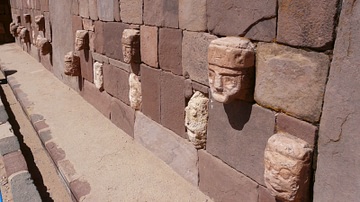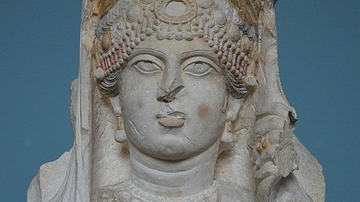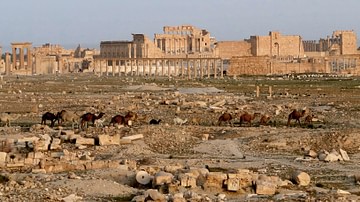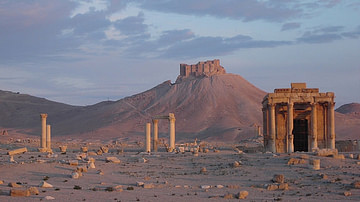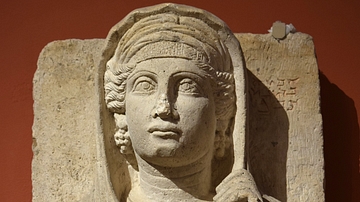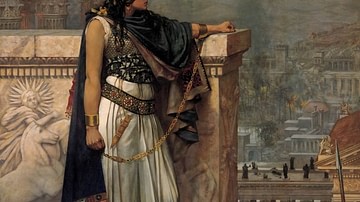Illustration
The hypogea or underground tombs, along with the tower tombs and house tombs, constitute an important part of the monumental burials of the wealthy Palmyrene class in the first and second centuries CE. The underground galleries were, most of the time, shaped like a "T" or cruciform, with the loculi into which the bodies of the dead were placed covering the walls. After placing the corpse, the places were sealed with sculptural portraits of the deceased. A dedicatory inscription, stating the names of the personages for whom the hypogeum was built was often placed above the entrance of the hypogeum.
The hypogeum in the picture was modeled after an original, built in 108 CE in the Valley of the Tombs, belonging to the Yarhai Family. The interior of the hypogeum was faced with hard limestone articulated as pilasters, niches, arches, and similar Greek architectural elements. The original sculptures of the Yarhai hypogeum were transported to Damascus Museum where it was partly reconstructed. Limestone. Roman Period, first to third century CE. From the Valley of the Tombs at Palmyra, in modern-day Syria. (Museum of Archaeology, Istanbul, Turkey).
Source of the description was taken from the book "Istanbul Archaeological Museums" by Alpay Pasinli.
About the Author
External Links
Cite This Work
APA Style
Amin, O. S. M. (2018, May 10). Subterranean Tomb from Palmyra. World History Encyclopedia. Retrieved from https://www.worldhistory.org/image/8714/subterranean-tomb-from-palmyra/
Chicago Style
Amin, Osama Shukir Muhammed. "Subterranean Tomb from Palmyra." World History Encyclopedia. Last modified May 10, 2018. https://www.worldhistory.org/image/8714/subterranean-tomb-from-palmyra/.
MLA Style
Amin, Osama Shukir Muhammed. "Subterranean Tomb from Palmyra." World History Encyclopedia. World History Encyclopedia, 10 May 2018, https://www.worldhistory.org/image/8714/subterranean-tomb-from-palmyra/. Web. 21 Apr 2025.



